Assam is a state in North East India and is also my homeland. Guwahati, the largest city in Assam, is my hometown. But I always had more reasons to detest Guwahati than to like it. There were many reasons for my displeasure — the overall state of the city, unplanned buildings, terrible (or rather no) drainage, the unruly traffic, the difficult and utter chaotic public transportation, the crass attitude of the people, pollution and all of the rampant corruption. Besides, the summer months are terribly hot even (and especially) inside the house and I am not someone who is a huge fan of extreme weather conditions. However, a visit to my grandparents’ home close to Jorhat town always used to be exciting. I loved the surroundings, the trees, the gentle breezes, the plentiful ‘baris’ (vegetable gardens), the animals and birds, the huge pond, and mostly the simple people. It was always relaxing to spend time in a village, away from the city life, but a few days in and one comes to realize that all of the quietness and peaceful atmosphere also have their drawbacks — frequent power cuts, needing to travel a long distance just to get an LPG cylinder refill, lack of high quality educational institutions or the unavailability of quality health care for my ailing grandparents, which meant they’d always have to travel to the nearest large city — my hometown Guwahati, of which I mentioned the cons before. I imagined that this trade-off always had to exist and was a part of the natural order of things.
In the city, space (land) is the most expensive resource, hence the possibility of growing one’s own food in a ‘bari’ doesn’t exist for most people living there. Also if one is not well off, life is quite a struggle. For example one cannot afford an air-conditioner during the summer months, or an inverter (a very large car battery) to use during power cuts. The only thing that was better in the city was the possibility of attending a better school or college, and having access to more career opportunities.
Cut to the present, 7 years hence, I’ve lived away from Assam. Firstly, two years in Bangalore where I worked in the industry. Thereafter, I moved to Germany to pursue my Masters and now I’m living in Sweden, working on my PhD and continuing on an academic career. Living in Europe expanded my horizons and led me to realize a lot of things. Firstly, you don’t need to own much to live a good life. People here are very different to how people are in India — they are less stressed with life and worry less about the future. And surprisingly this is not a result of owning more, but rather everyone being more equal. I also began to read more and discover about alternative lifestyles in the West, where people were turning towards a more holistic form of living. I read about eco-villages, community housing, resource sharing, money-less living, free education and the impact that such holistic living has had on people. It dawned on me that this entire rat race of running after money, and a job which pays more money, and an education which leads to such a job, and the corruption prevalent in all of these spheres is totally unnecessary. It is like a backward step towards a more humane and civilized society. And all of this is because of the lack of basic resources and the scarcity that plagues us in India, and the way that we think is the right way to fix this — try to own more stuff for ourselves. I wonder if this approach had made us any happier. Thinking a bit back in time, where our villages thrived at one point in history while living holistically, but are abandoned now in lieu of a ‘better life’ in a mega city — leading to unsustainable populations and all of their after effects. I thought to myself, if people had all the basic resources that they needed — food, clothing, shelter, education, healthcare and a feeling of community, would they still flock to the cities? Because at the current level of technology that the world is at, global scarcity is not an unsolved problem, it is only the distribution that is messed up.
In the last 7 years, I also began to think more about my homeland, and the people living in Assam. They do not possess most of the facilities taken for granted in the West. But the most important thing that they do not possess is the knowledge of how far technology has advanced! Most technologies are prevalent in India, but are not widespread. And people are not interested (or even aware) in truly life-improving technologies as the education that most of the youth seek is mostly in those fields which land a job with a good salary. This is justified because everyone wants a good life. Hence they move into banking, finance, MBA, law and the engineering of drilling oil. Which perpetuates the vicious cycle of ignorance, waste and infinite consumption. If people did not have to go full circle and realize it the hard way as most people in the West have (that owning more doesn’t guarantee more happiness) India would progress way more rapidly, not just in GDP, but in overall happiness of its populace. Indeed, in recent decades, although the GDP has increased, the average Indian has not become more happy, definitely not counting those who finally succeeded in becoming an NRI, and hence presumably happy.
A NEW SOCIO-ECONOMIC SYSTEM
I’m a big fan of decentralized systems. They are way more easier to handle and manage than a centralized system. Also when one part goes wrong, the remaining parts keep functioning, largely regardless of the failing part, depending on how independent each part is. This is true for what is known as peer-to-peer computer networks, crypto-currencies, smart contracts and many other systems in software. The same principle can be applied to a social network. Dunbar’s number is a value assigned to the maximum number of close relationships that one person may have in their lifetime. This includes family, friends, partners, colleagues and all of the people one might encounter during their lives. This number is 150. Hence it is possible to assume that 150 or its thereabouts is a good estimate for the size of an independent community working and living together as a group.
The economy of sharing works as follows — every single person volunteers to work according to his or her skill set. Or to do the things they like to do. Jobs which are ‘valuable to life’ are the only jobs necessary in this economy. For example farming, teaching, engineering, design and construction. All other jobs are either needless or are delegated to computers. Technology is fully embraced in this economy and there are no such things as planned obsolescence — everything is made to last as long as possible and with the best materials available nearby. Since there is no concept of money, or profit, this kind of thinking is made possible. Also the entire thought process of creating something lies in sustainability and preservation. That is to use materials which are good, cost effective, easier to maintain in the future, and easily recyclable — a thought process which is severely lacking in our current systems of economy, in nation states, all around the world.
The aim of this system being small and decentralized is facilitated by all of its requirements being off-grid. That is, all of the resources that this community needs for a rich and thriving lifestyle are made available on site. Food can be grown on gardens and greenhouses, and possibly with modern techniques like hydroponics, aquaponics and aeroponics, on ground or on terraces, or even building walls — providing for more than adequate food supply for the residents. More resource intensive or exotic food that cannot be grown on site, can be procured from outside the commuity by money earned from skill exchanges, which I shall describe in a moment.
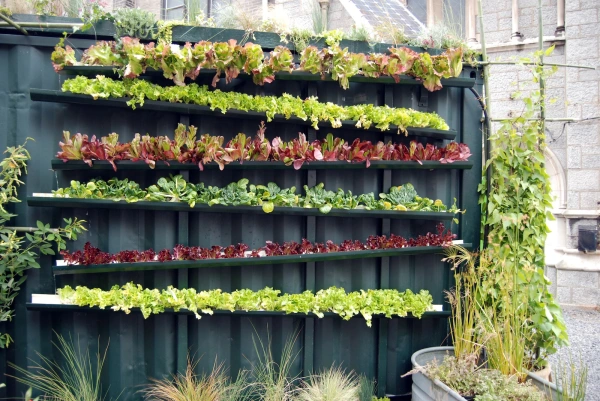
The main challenge of living off-grid is power (hence off-grid), but with the advent of technology it has also become very feasible and practical for power to be a decentralized resource. The sun, which can be thought of as the largest naturally occuring nuclear reactor, shines in abundance in almost all parts of India, and most parts of the world. It is indeed, the only energy source powering the entire planet since eternity. Hence it is only obvious that solar should be the primary source of power. In Assam, there is no dearth of rivers and streams, which means small scale hydro projects like vortex flows could also possibly be used to generate power. Besides there are other options like wind etc. A solar system, once set up, requires almost no additional maintainance and can provide electricity to the entire community at all times. But as always, since preservation is key, residents should use all resources judiciously.

Another important resource is water. Thinking of Assam, the mighty river Brahmaputra and the problems that we face with drinking water, or with the amount of rainfall that we get, owing to which our streets always getting clogged with floods ever since I can remember, I cannot seem to be bemused enough at the irony of it all. The one thing that we should have been masterful at is the use of water! This really shows our combined progress (or rather, anti-progress) as a society.
Blaming governments and corrupt leaders do not lead us to solutions. More importantly, we need to learn how to harness the power of water. Ample amounts of drinking water can be obtained using natural multi-layer filtration methods on rainwater, harvested through the roofs of buildings. This water can also be used for other household purposes like in the kitchen or showers. The idea of all water flowing through European taps being potable is something I really like a lot. And a well thought of rainwater harvesting and drainage system on our roofs can make this very easily affordable. Water used up in showering or the kitchen can go through a cycle of reuse for flushing toilets after which the resulting water (black water being the technical term) can be treated further and fed to the greenhouse and outer areas, where the plants nourish themselves being part of the same cycle. Furthermore, moats surrounding small buildings can either serve as natural swimming pools or an aeroponic system with fish etc. The important part is to always keep the water flowing using natural elevations or artificial means like a pump for example. Drainage is key. In this way, a well planned design built into the system can both provide for efficiency and usefulness.
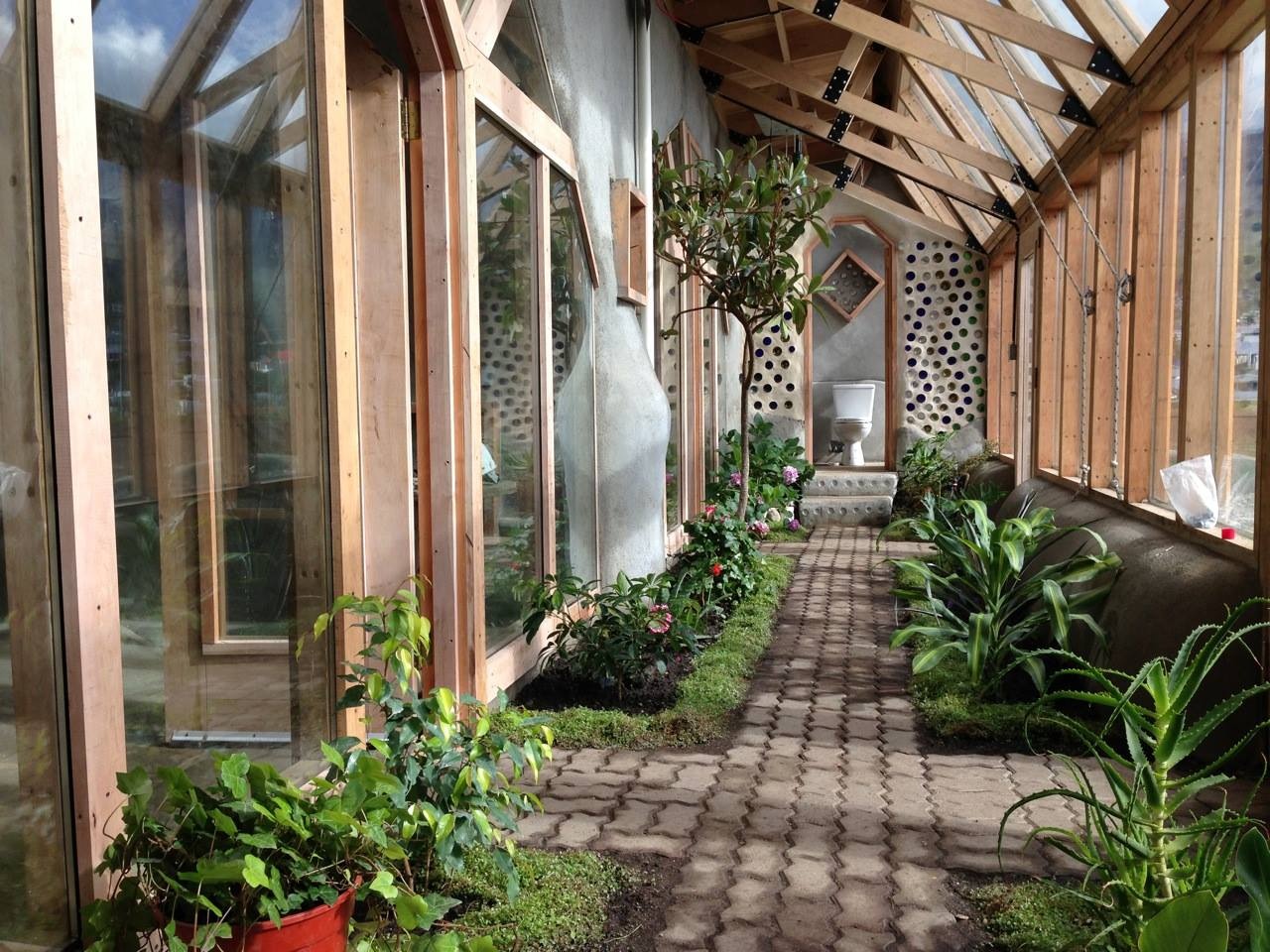
Shelter is almost the most important part of community living, since a house is what makes the idea perceivable. Keeping up with our principles of sustainability and preservation, the current state of modern construction is nothing but horrifying. Cement and steel are some of the world’s most unsustainable building materials contributing to large amounts of carbon emissions. They are also expensive and owing to malpractices in the construction industry, it is often reported that buildings are not sturdy enough as they are supposed to be. Indeed cement and steel are strong materials, but they are unsuitable to our climate for many reasons. They neither sequester carbon, something which hempcrete does, nor do they have thermal mass, which cob (a combination of mud and straw) provides. Materials readily available in Assam would indeed be bamboo and cob, which, although people might detest initially as impractical and old fashioned, are the best low-cost and energy efficient building materials, perfect for a home in the hot and humid climate of Assam. Bamboo and Cob houses can be extremely beautiful if designed well. The Green School and the buildings and hotels built by the company Ibuku in Bali, Indonesia are great examples of how beautiful, strong and resilient buildings based on bamboo architecture can be. Cob is known as the best material providing thermal mass, which means a house made of cob would remain cool inside during summers, and warm during winters. Which would reduce energy costs for usage of fans, and possibly remove the need for air conditioners entirely. Also these houses are very strong, and resilient to earthquakes as well. Indeed, cob houses once built can last hundreds of years.
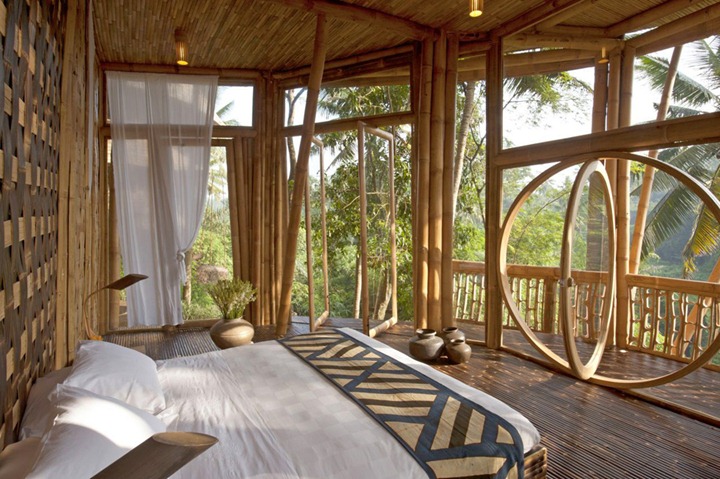
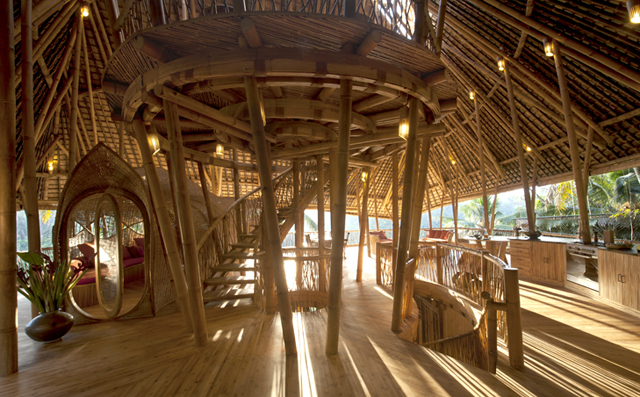

Apart from greenhouses to produce food, the surroundings of the buildings can also be covered with trees to provide shade and keep the temperatures down during the summer. Composting toilets can be used to allow human waste to be directly recyclable and reducing the amount of water usage.
Another very important feature of an independent community is the medium of exchange. Should we go back to barter again? Who decides the costs of resources? Well, in a truly self-sustainable community, the usage of money should be very limited, if at all necessary. The everyday resources like food, water and energy available should be sufficient for all and everyone should have an equal contribution during the construction process and initial setup — essential items like solar panels, computers, building equipment etc. Various in-house and community wide businesses can be set up for income inflow from the rest of the world. Like selling local organic fruits and vegetables, or education provided in schools within the community for people willing to learn a skill, but not having adequate resources to join a standard classroom. Businesses existing online can be entirely run from within the community, without the hassles of needing to rent out office space or maintaining a hierarchy of workers as in a standard company. Everyone is equal, there are no fixed timings, and all the proceeds go to essential items for the entire community. It might seem as if the people in the community will very likely end up in differences owing to issues like ‘who owns how much’, but that is exactly the point to be addressed. To share is to care as a whole. There should be no concept of ‘I’ or ‘myself’ or the need to ‘own’ anything. The only goal is to maintain the overall well-being of the community as a whole, and this indeed will result in increased well being of every individual, as proven to be the case in more equal societies throughout the world. Moreover, no one individual is forced to continue living in the community against their will. The only reason to live together is to want to live together.
That being said, the use of a medium of exchange in the form of a crypto-currency is the best way for exchange of valuable goods and services within the community which do not otherwise belong to the common community as a whole. Crypto-currencies are good because they are decentralized and not tied to a central authority like a bank, they are not prone to inflation as the number of currency tokens in crypto-currencies is always a constant and they can be divided to a possibly infinite resolution. They also distinguish a unique form of exchange between the inhabitants within the community and if needed the community themselves can decide on how they want their economy to function, have a minimum wage for everyone, for example. A community wide accepted rate of exchange with standard forms of currency can be decided upon for outsiders who join the community for the first time. There is no use of this currency outside the community.
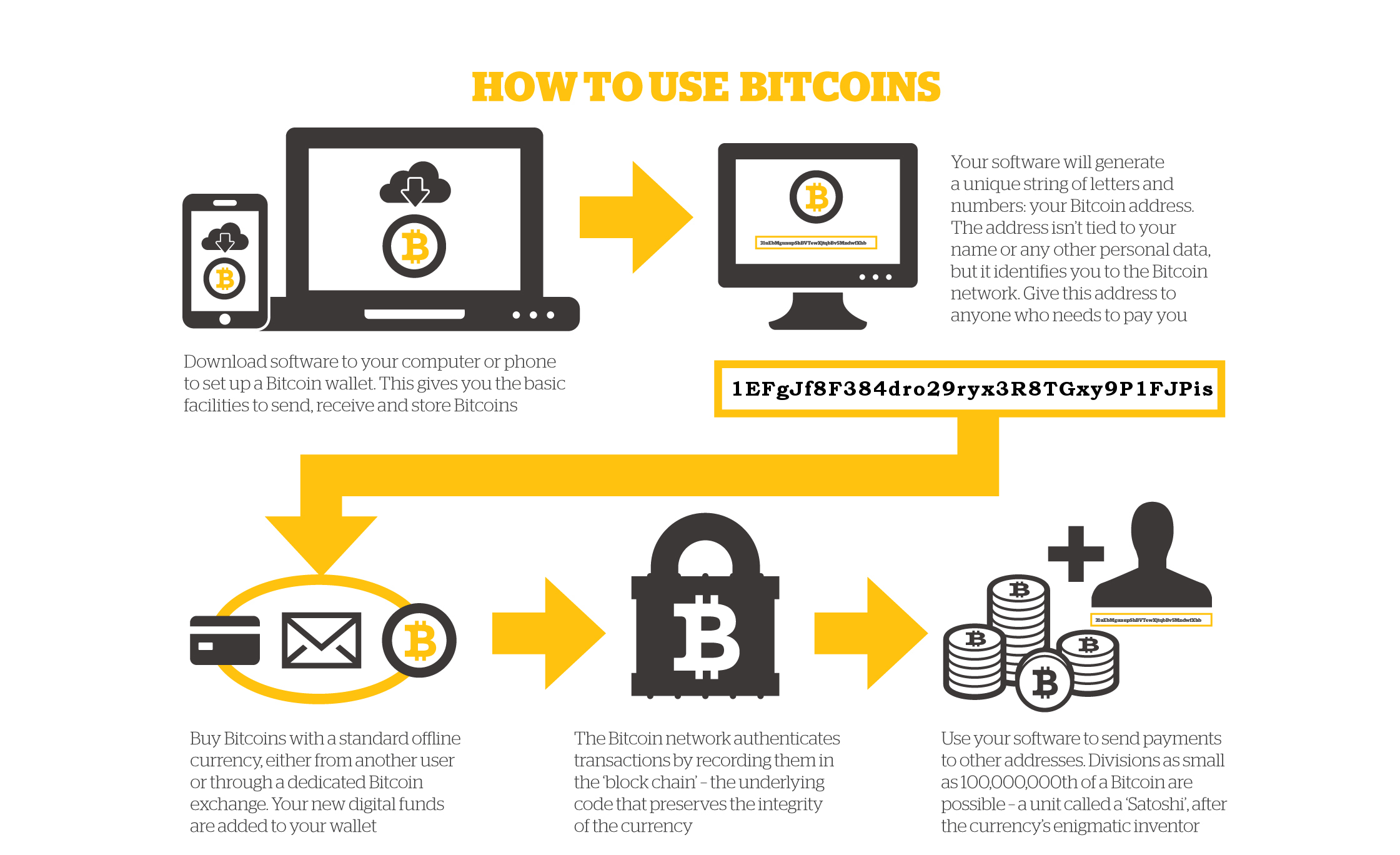
Although a lot can be devised upon the use of this currency, the idea should still be to go the money-less way. The monetary system is indeed the cause of all the suffering and hardship that the world is facing right now as it encourages infinite growth (and infinite greed) on a finite planet with finite resources. This can never be sustainable, and the idea of money should not exist in a community striving for equality and harmony with nature and the environment.
PLANS FOR THE FUTURE
So we’ve seen that an almost fully self-sustainable community, with a resource sharing based economy and an outlook towards preservation and conservation can truly be built not only in Assam, but anywhere in India or around the world. But what are the benefits of such a system? For one, all inhabitants get the pleasure of living in a truly rural atmosphere, with natural swimming pools, trees, home grown food, a cosy shelter as well as the sense of community and belonging-ness. If the community manages to house a few experts in the fields of engineering and medicine, the internal expertise gets a big boost. And this is highly likely in a community of 150 or so like-minded individuals. Also, home schooling becomes a possibility if people within the community are well versed with science, arts, history and language, with the internet helping out a great deal as well.
With the elimination of money, a great deal of problems are solved automatically. All basic needs being taken care of, and excess of anything not welcomed, the community grows equally with no inherent social stigma or class divisions created due to economic imbalances. Education and progressive thoughts being the key.
Another very important thing that several such eco-villages located somewhat away from the bustling cities bring about is a decrease in over-crowding of the cities. Imagine if all villages had all of the basic amenities sorted out, most people will not leave their houses and land in the village and live in slums in and around a city for a better life. By incentivizing the lifestyle in a village to be no worse (even better!) than living in a city, we’ll notice that the life in the city also gets better — with reduced pollution, lesser inconveniences in management and an overall reduced economic inequality leading to lesser crimes and a plethora of other related social problems.
Thus, to build a model self-sustainable, global eco-village is truly the solution to all the inadequacies of the current system in Assam. Organic food, water, shelter and power are freely available to anyone within the community. Education within the community is also freely made available by teachers who volunteer. Houses are built keeping sustainability and preservation in mind. Strong, resilient and readily available natural building materials are used to cut carbon emissions and enable living in a greener way.
All of this being said, this good willed, sharing-centric and technologically and humanely progressive community is still a distant dream for me. I am on the lookout for individuals or groups who would possibly be interested in helping me build and live together in this community and make it grow further, to serve as an example for the whole country. I am always looking forward to discuss the current implementation ideas that I presently have, in detail, and ways to improve upon them. I believe in the idea of open-source, which is indeed about sharing resources and know-how. Hence these foundations can only grow with time and improve.
My inspiration for these ideas come from various sources and people, most notably Jacque Fresco of ‘The Venus Project’, Peter Joseph’s ‘The Zeitgeist Movement’, Michael Reynolds’ ‘Earthships’, John Hardy’s Green school and Elora Hardy’s works with Ibuku, ideas like Open Source Ecology, AirBnB, Couchsurfing, The World Wide Opportunities on Organic Farms (WWOOF) initiative, the Occupy movement and related movements and the countless many eco-village and self-sustainability advocates all around the world for your splendid open-source contributions on the internet. The world is coming together as one, and your work is proof of it.
Originally published at http://milspeak.wordpress.com.
